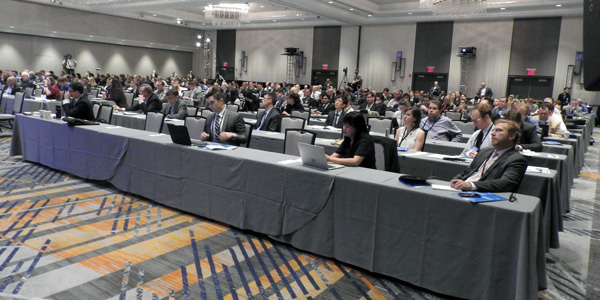By Michael Kuser
NEW YORK — New York’s Reforming the Energy Vision initiative aims to fulfill a twofold objective, according to the state’s top energy official: attract the capital needed to integrate renewable energy into the grid while simultaneously motivating utilities to work with clean energy startups instead of treating them like enemies.
“Everything has to change,” New York State Chairman of Energy and Finance Richard L. Kauffman said Tuesday at Greentech Media’s New York REV Future 2017 conference in Brooklyn.
Government is changing too, the state’s first “energy czar” said. While state agencies “used to just do one-time grants,” they are now working to develop sustainable business models for the electricity sector.
REV Changing the Role of the Utility
Kauffman said he sees “green shoots of change” as evidence of New York’s evolving energy framework, such as Consolidated Edison’s Brooklyn-Queens Demand Management program (BQDM), a $200 million effort designed to defer infrastructure spending through energy efficiency, distributed energy resources and demand response. (See NYPSC Extends Con Ed Demand Program.)
“Its non-wires requirement — that was a big deal and that has spread to Central Hudson … and we’re close to National Grid — thousands of rate cases,” he said.
And while the solar industry has shown a profound change in its willingness to engage with state agencies, utilities have “a real struggle to figure out how to be partners [with DER providers] instead of competitors.”
But integration of DER will be key to the evolution of the grid, he said.
“There’s no question that storage has to be a critical part of the system, which is getting peakier and peakier. Yet the value of storage is not adequately captured yet,” Kauffman said. “Utilities procure power, but up to now have not had any financial incentive to reduce peak power purchases.”
Moderating a panel on REV policy, Greentech’s Katherine Tweed asked where to draw the line to mark the right mix of energy resources: “BQDM is the greatest experiment in the world … but people say Con Edison’s going to build that substation when they need it.”
Con Ed Vice President for Distributed Resource Integration Matt Ketschke said, “Most DER doesn’t line up with Con Edison because most of it is not in the business of power generation. … Our real goal is ultimately to eliminate the need for those substations.”
Theatrical Disruption
Three protesters from the New York Energy Democracy Alliance disrupted Kauffman’s talk with a bit of guerrilla theater to highlight the difficulty they say some 800,000 low-income people in the state have paying their energy bills under REV.
The skit began when a man several rows from the stage stood up and identified himself as a renter having trouble paying his utility bills.
After he had asked Kauffman how REV would address the concerns of “low-income communities of color,” two women on either side of the man stood up, pretending to be Kauffman’s security guards.
“Silence!” shouted the women, who wore capes reading “REV = Not Your Business” and “REV = Not a Democracy.”
“This is not the place for the complaints of the working class.”
They went on to bow at Kauffman, a former Goldman Sachs banker, mocking him as the “all-powerful energy czar.”
They finished their skit within a couple minutes — escorting the man out of the conference room before the real security could arrive — and exited to scattered audience applause.
Kauffman took the disruption with humor, saying he was “well aware that accountability is key and that well more than 800,000 New Yorkers have trouble paying their electric bills.”
The electric power system “is financially inefficient as well as energy-inefficient,” Kauffman said.
“So, guilty as charged — I do have a financial background,” he said. But Kauffman said that background only motivates people inside the industry to make the system more efficient.
‘Where Policy Meets Reality’
Nilda Mesa, director of urban sustainability and equity planning at Columbia University’s Urban Design Lab, opened the conference by saying that energy efficiency should be treated like a renewable resource “because the greenest electron is the one that’s not used.” Eventually, “financing people can start to understand the engineering language,” she said.
Scott Weiner, deputy for markets and innovation at the New York Department of Public Service, pointed to the challenge of shifting “from a paradigm of net metering to more market-based uncertainty that exists through the value of DER methodology,” particularly for the solar sector.
“But the industry has stepped up,” he said.
Financing is key to the transformation of the grid, Weiner said: “If I could take out my magic REV wand, I’d like to see the investment community, the people who provide project financing, more directly engaged.”
Todd Glass, energy lawyer with Wilson Sonsini Goodrich & Rosati, asked how project financiers could judge utilities, considering the wide spread between various utilities’ cost of service estimates. Weiner said, “Figuring out the marginal cost of service can be hard to do; that’s where policy meets reality.”



